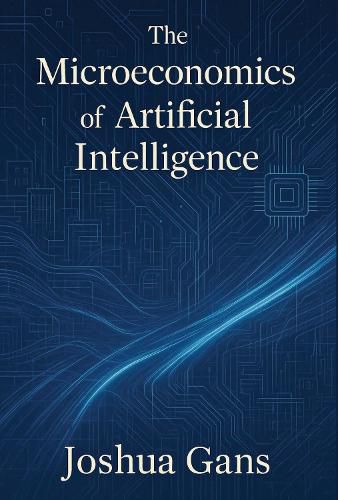Readings Newsletter
Become a Readings Member to make your shopping experience even easier.
Sign in or sign up for free!
You’re not far away from qualifying for FREE standard shipping within Australia
You’ve qualified for FREE standard shipping within Australia
The cart is loading…






A comprehensive treatment of the microeconomics associated with the adoption and use of artificial intelligence.
It is well-recognized that recent advances in AI are exclusively advances in statistical techniques for prediction. While this may facilitate automation, this result is secondary to AI's impact on decision-making. From an economics perspective, predictions have their first-order impacts on the efficiency of decision-making.
In The Microeconomics of Artificial Intelligence, Joshua Gans examines AI as prediction that enhances and perhaps enables decision-making, focusing on the impacts that arise within firms or industries rather than broad economy-wide impacts on employment and productivity. He analyzes what the supply and production characteristics of AI are and what the drivers of the demand for AI prediction are. Putting these together, he explores how supply and demand conditions lead to a price for predictions and how this price is shaped by market structure. Finally, from a microeconomics perspective, he explores the key policy trade-offs for antitrust, privacy, and other regulations.
$9.00 standard shipping within Australia
FREE standard shipping within Australia for orders over $100.00
Express & International shipping calculated at checkout
A comprehensive treatment of the microeconomics associated with the adoption and use of artificial intelligence.
It is well-recognized that recent advances in AI are exclusively advances in statistical techniques for prediction. While this may facilitate automation, this result is secondary to AI's impact on decision-making. From an economics perspective, predictions have their first-order impacts on the efficiency of decision-making.
In The Microeconomics of Artificial Intelligence, Joshua Gans examines AI as prediction that enhances and perhaps enables decision-making, focusing on the impacts that arise within firms or industries rather than broad economy-wide impacts on employment and productivity. He analyzes what the supply and production characteristics of AI are and what the drivers of the demand for AI prediction are. Putting these together, he explores how supply and demand conditions lead to a price for predictions and how this price is shaped by market structure. Finally, from a microeconomics perspective, he explores the key policy trade-offs for antitrust, privacy, and other regulations.